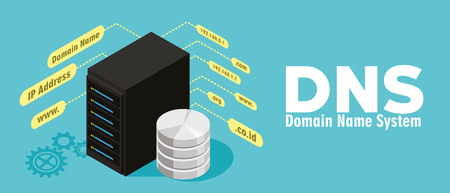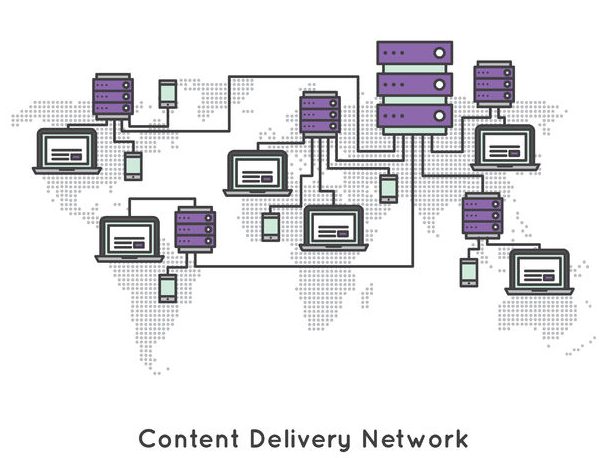DNS migration mistakes are more common and more costly than most people realize. Migration is one of those tasks that seem simple until something goes wrong. It’s easy to assume that moving DNS zones from one provider to another is just a matter of copying some records and changing a few settings. But DNS is foundational infrastructure. If you get it wrong, the consequences are immediate and visible: websites go offline, email stops working, and services fail silently. And because DNS operates mostly in the background, issues can be hard to detect and harder to fix once they appear.
In this guide, we’ll explore the five most common DNS migration mistakes and show you how to avoid them. Whether you’re a beginner or someone supervising a large-scale migration, understanding these pitfalls will help you keep your services online, fast, and secure throughout the transition.
Table of Contents
What Is DNS Migration?
DNS migration is the process of transferring your domain’s DNS zone from one provider to another. It involves moving all DNS records, such as A, MX, TXT, and CNAME, into the new provider’s system along with nameserver settings. The goal is to replicate your DNS configuration exactly as it was, but on a different infrastructure.
Once the new configuration is ready, you change your domain’s nameservers at the registrar. After that, all global DNS queries for your domain are routed to the new provider.
People migrate their DNS for many reasons to improve uptime, gain access to global Anycast networks, adopt features like GeoDNS, or move away from providers that no longer meet their reliability, performance, or support expectations.
It sounds straightforward, and the steps are actually basic. However, what complicates DNS migration is that it happens at multiple levels, and every step must be aligned correctly. If even one part is out of sync, your users may be directed to outdated services or get no response at all.
Why Is a DNS Migration Mistake Risky?
The DNS controls how users and systems find your services. A DNS migration mistake can take your website offline, disrupt your email, or prevent APIs and integrations from functioning. These aren’t just technical inconveniences, they’re business risks. When DNS fails, users can’t reach your brand, communications break down, and your credibility is affected.
Additionally, DNS issues often don’t show up immediately. Caching by recursive resolvers, browsers, and ISPs means a problem might not be discovered until hours after the change. That’s why it’s so important to prevent mistakes before they happen.
Experience Industry-Leading DNS Speed with ClouDNS!
Ready for ultra-fast DNS service? Click to register and see the difference!
The 5 Most Common DNS Migration Mistakes
Let’s look at the top mistakes beginners make during DNS migration and how to avoid them.
1. Forgetting to Change Your Domain’s Nameservers
Once you’ve copied your DNS records to the new provider, it’s essential to update the domain’s nameservers at your registrar. This step is often overlooked, but without it, your domain will continue to use the old DNS provider. Your changes will have no effect, and the migration will be incomplete.
It can get even more complicated if your account with the old provider is deactivated or expires, your domain will stop resolving altogether. That means downtime, broken services, and unhappy users.
If you use custom nameservers under your own domain (like ns1.yourdomain.com), don’t forget to update the Glue records. These are special records at the registry level that link your custom nameservers to their IP addresses. Without updating Glue records, resolvers won’t be able to find your nameservers, even if everything else is correctly configured.
2. Leaving NS Records Pointing to the Old Provider
Changing your registrar-level nameservers isn’t enough. You must also check the NS records inside your DNS zone. These records define which nameservers are authoritative for the domain or its subdomains. If they still point to the old provider, this can cause confusion and misrouting.
This mistake is easy to overlook because everything may seem to work at first. However, recursive resolvers may follow the NS records rather than the registrar’s delegation. This inconsistency can lead to resolution issues that are hard to trace.
After importing your zone to the new provider, verify that all NS records reflect the correct nameservers. Remove any information about old nameservers that are no longer authoritative.
3. Importing Unsupported or Incomplete DNS Records
Many users expect a zone export/import process to be flawless, but real-world migrations rarely go perfectly. One of the most common issues is importing records that either aren’t fully supported by the new provider or depend on platform-specific services.
Some record types, such as ALIAS, ANAME, or redirect records, depend on infrastructure, like web servers, that only exist on the old provider. Once you move, that system is no longer available, and the records don’t function unless they are specifically reconfigured. A record may appear in your new DNS dashboard, but without the necessary backend, it won’t work.
In addition, not all providers export zone files in a standard format like BIND. If the exported file is non-compliant, the new provider’s system may skip or misinterpret some records during import. To avoid this, use AXFR zone transfer when possible. It’s the most accurate way to move all records from one DNS system to another. If that’s not an option, make sure to carefully review every imported record manually.
4. Not Testing the New DNS Setup Before Switching
It’s dangerous to assume your DNS is ready to go live without testing. Many users skip this step and immediately update nameservers. The result can be broken services, undelivered email, inaccessible websites, and a stressful troubleshooting process under pressure.
Before switching nameservers, test your DNS setup by querying the new provider’s nameservers directly. Use tools like dig or nslookup to check that all records return the expected results. If you’re using custom integrations, verify that they work with the new DNS configuration.
DNS is heavily cached, so if something breaks after you go live, you won’t be able to fix it instantly. Testing gives you the opportunity to identify and resolve problems before they become visible to users.
5. Skipping a Test Migration When Moving Multiple Zones
If you manage a portfolio of domains or subdomains, don’t try to migrate all of them at once. It’s better to perform a test migration of just a few zones first. That way, you can verify the entire process, including export, import, record validation, and nameserver updates, works as expected.
Test migrations help you discover unexpected issues before they affect production. Once the test zones are migrated and validated, you can apply the same steps to the rest of the zones with more confidence and far less risk. This is especially valuable when dealing with hundreds of domains or mission-critical infrastructure.
BONUS: Best Practices for a Smooth DNS Migration
Avoiding mistakes is essential, but you should also follow proven best practices to ensure a smooth and professional migration process.
- Reduce TTL values in advance: At least 48 hours before making changes, lower the TTL (Time To Live) for your DNS records to 300 seconds (5 minutes). This ensures that any updates will propagate quickly and efficiently. After the migration is complete and verified, you can raise TTL back to standard levels to improve DNS efficiency and reduce resolver load.
- Use AXFR zone transfer: When supported, AXFR transfers the entire zone directly from one provider to another. This method avoids issues related to incompatible zone file formats and reduces the chance of missing records.
- Work with a provider that offers migration support: A reliable DNS provider should offer documentation, tools, and human support for migration. If you’re unsure about a particular record type or how to implement a specific configuration, it’s far better to ask for help than to guess. This can save hours of troubleshooting and prevent costly outages.
- Keep a complete record inventory: Before migrating, create a full list of all your DNS records and what they do. Identify which services rely on which records. This will make validation easier after import and help you notice if anything is missing.
- Monitor your DNS after the migration. Use DNS checkers and uptime monitors to verify that your services are reachable and responding correctly worldwide. Be especially watchful for any user reports of downtime or service failures in the 24–48 hours after switching nameservers.
Conclusion
DNS migration may not be something you do every day, but when you do it, it must be done right. A small oversight can lead to significant downtime, data loss, or broken services. That’s why preparation, testing, and validation are just as important as the technical steps themselves. By avoiding the five most common DNS migration mistakes, you can ensure that your services remain stable and your users stay connected.






